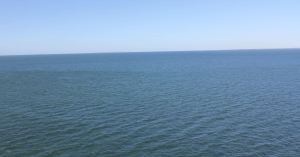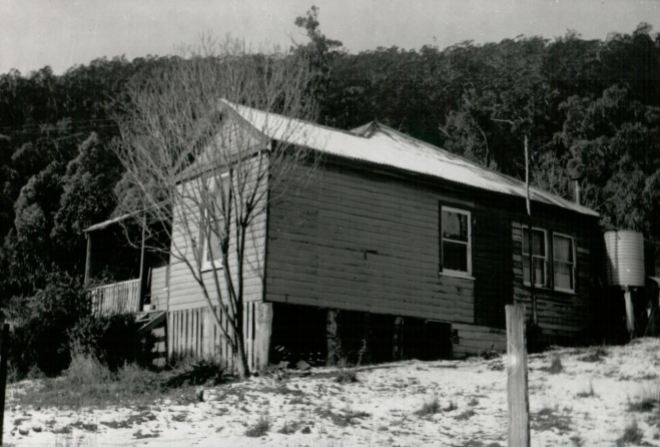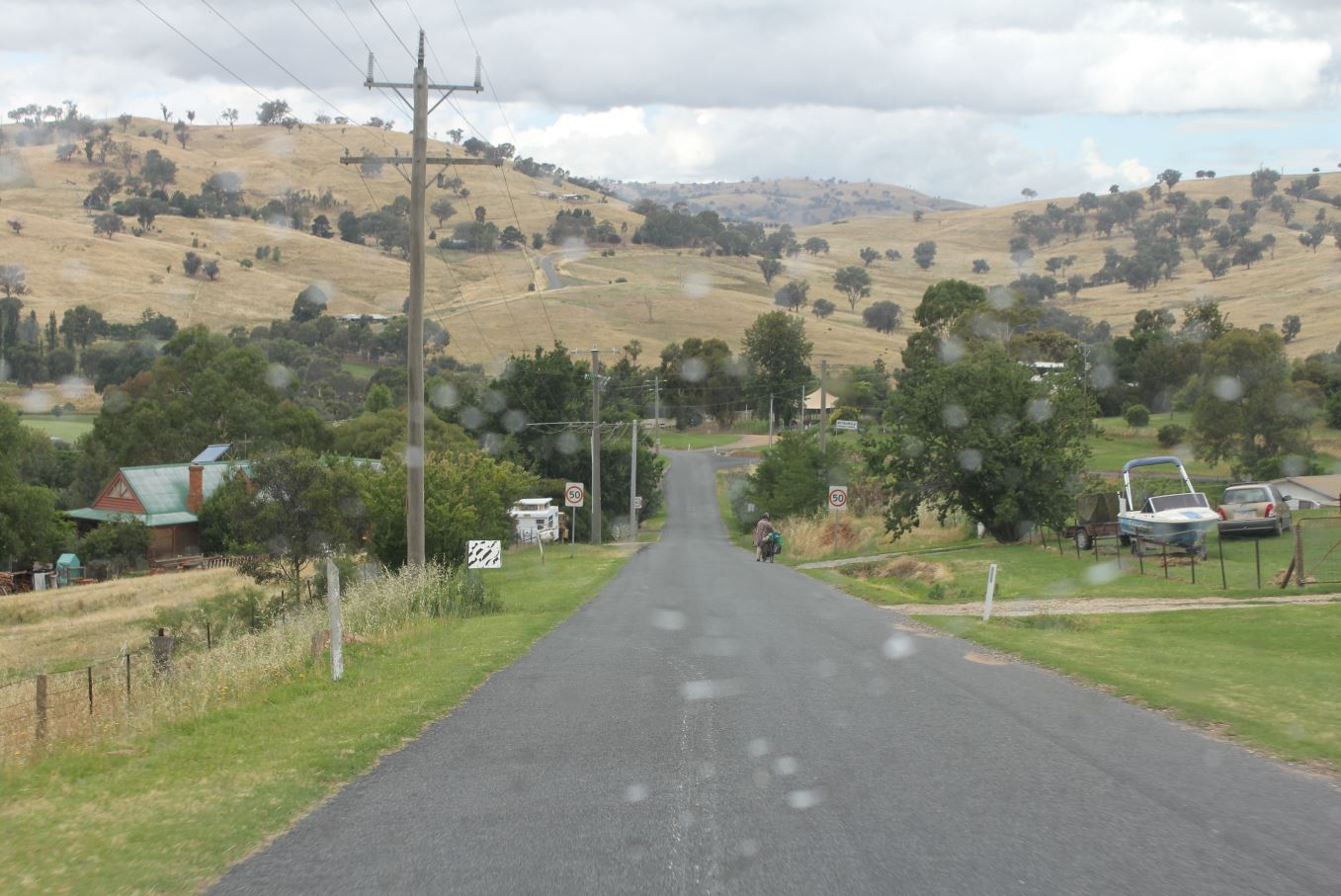
Manly NSW looking historic taken 1981
Once upon a time probably in England, in about 1802, one particular baby girl was born. Her name was Hester.
We can’t really be sure of anything to do with Hester’s origins. She might have been born in Ireland or Wales or somewhere else in Europe, but most likely she was born in England because that’s where she is first identified in the records. She was probably born with the surname Wright, but she might have been married, or she might have taken a stepfather’s name. She has only recently entered my ancestor radar but known descendants have spent years piecing her life together. It’s vaguely possible that even now after so much effort, I have something to add to her life story, but I’m having trouble following the trail the previous researchers forged. It takes time and a lot of sifting through details.
Hester is a beautiful name, I think, with a timeless feel. It’s easy for me to conceive of Hester Wright as my ancestress because of her name. My own great grandmother was Esther (Hester) Brown born 1883 in Apsley, Tasmania, Australia so the name is already in my family. If I am on the right trail, this Hester/Esther Wright was my Hester/Esther Brown’s great great grandmother.
It is always hard to trace women in that pre-UK census era in England, especially single poor women and I’m guessing Hester was poor and single. We first find her at her trial in Bristol, but that’s no indication that she came from the region. Those down on their luck and surviving by their wits tended to travel widely. If the living patterns of other ancestors are a guide, I’d guess that she came from that general area – Somerset, Gloucestershire, Herefordshire, Warwickshire, Worcestershire, Northamptonshire .. there was a lot of movement through those regions, you can tell by the convict records. A whole lot of arrests in one county with a prior arrest in the next county and the family living at a native place three counties away.

Hester undoubtedly saw the rougher side of life through her childhood. This scene from The History of the Adventures of Joseph Andrews by Henry Fielding 1841 centennial edition p 305
If she was born around 1802, which is an extrapolation based on later records, then she was only around fifteen when arrested in Gloucestershire for stealing five yards of lace. The arrest probably took place in late 1816, sometimes the accused languished in jail for many weeks waiting for the next quarter sessions.
In January 1817 she was brought to trial in Bristol, found guilty and sentenced to seven years transportation.
It took me some time to find corroborating evidence, but the earlier researchers were right on the money. Here she is at the Bristol Quarter sessions:
14 Years Transportation: Elizabeth Patrick and Hester Wright for stealing 5 yards of lace. (Bristol Mirror 18 Jan 1817 At the General Quarter Sessions)
There’ll be a nice story there but I might have to go to Bristol to get it. The two women (girls?) were placed together in Bristol’s old Newgate Prison to await action. The new Newgate Prison opened its doors in 1820. The old one by all reports was dark, airless, damp and infested with vermin. At some point maybe, their sentence was reduced from fourteen to seven years. This was a common practice after sentencing, probably to encourage compliance as well as to maintain a threat to the general populace.
I have also found a report in an online newspaper repository of one Hester Wright in March 1817, appearing at Guildhall in Bristol on a charge of assaulting an Overseer of the Parish of Bishopsgate and being assigned one month solitary confinement. This may or may not be our girl, the Parish of Bishopsgate looks to be in London not Bristol, although the girl appeared in court in Bristol for this offence. It looks also as if transcribing here would break my terms of service so I have not done so.
This one, however, can be transcribed:
On Friday, the under-mentioned female convicts were removed from Newgate in this city, to the transport ship ‘Friendship’, lying at Debtford; … Elizabeth Perkins, Sarah North, Eliza Patrick, Harriot Neat, Hester Wright, Sarah Ann Cox, Ann Kennicott, Lucy Meares, Sophia Richards and Sarah Hopkins. (Bristol Sentinel 17 June 1817 Varieties)

Open sea.
Reports of the Friendship leaving England are thin on the ground and we’d have nothing to go by were it not for unsavoury practices on board ship during the journey. The ‘Friendship’, captained by Andrew Armet on this journey 1817-1818, was one of the “prostitution ships”. This was one of those journeys which led to the legend of open prostitution on board female convict ships, and this is one time when the tales are clearly correct. An inquiry into affairs on board the ship was conducted after its arrival and were proven beyond doubt.
It is important to Hester’s story to pinpoint events with accuracy. The Colonial Secretary’s Papers in the New South Wales Archive are a wonderful source of information about this journey, albeit carefully phrased. Details given in these papers by Andrew Armet (Reel 6047; 4/1740 pp.55-67) say that the Friendship left port in London on 3rd July 1817.
We need to pinpoint the date because Hester, upon her arrival in Australia, was heavily pregnant – with MY ancestress. Figuring out when the event occurred is crucial in determining the father. Early researchers believed at first that she met the father in New South Wales. Then researchers learned that the baby was born on 10th May 1818. A baby born in May was not conceived before 3rd July, not by any stretch of the imagination. Maybe by the end of July and then a few weeks overdue?
It’s pretty clear that Hester Wright, aged by now about sixteen years, sailed from England on the convict ship ‘Friendship’ and became pregnant while on board.

Land sighted from a ship
We don’t hear much about these journeys, but any journal or ship’s log that I have seen is full of interesting detail. There was also heat, thirst and claustrophobia, but a lot went on at sea. Other ships passed, they saw whales and sharks and land masses, there were storms, they stopped at ports for water and supplies. Sometimes there was sickness on board, sometimes even crew members and officers suffered mental complaints. Allegations were made that prostitution began on board the Friendship even before it left Debtford, between soldiers and the convict women. It was stated that Armet and other officers attempted to stop it but were unable.
As well as the prostitution, this trip had pirates! They left England and as usual for convict transports, headed for the Cape of Good Hope.
Here’s a rough map:

Journey of the Friendship 1817-1818
Approximately marked in are Debtford in England, Madeira, St Helena, Capetown and Sydney. Lots of ships went this way. I’ve been a bit vague around Australia because usually they passed south of Van Diemen’s Land and came up the east coast, but some went through the Strait and some came round the north. I’m not sure which way the Friendship went.
What we do know is that the Friendship left Debtford, sailed down the Thames and headed south. Before terribly long it was in the proximity of Madeira where it collected some pirates – six Spaniards and an American!
Why am I making a big deal about this? Well, it’s a flight of fancy but I’m looking for a Spaniard in the tree and have been for at least a year now, because of our DNA ethnicity report.
I’m very aware that these things vary, but this reading has held true across both FtDNA and several different models via Gedmatch. ‘Southern Europe’ does not necessarily equate to Spanish but we have both Mexican and Spanish distant cousin matches – purely Hispanic without any English people in their tree. One of my Spanish-speaking cousins doesn’t even speak English, I use Google Translate to communicate by email with him. His kit was purchased for him by a relative in the United States. We haven’t found the connection but it’s on my paternal side and that’s the Hester Wright side. Very vague but I have to keep this in mind. One follows all the leads and the red herrings and the red herrings are eventually proven incorrect, but you don’t know until you put in the time.

Our relevant Ethnicity DNA reading
So since I’m looking for a father for Hester Wright’s child, and I know the month in which that child was conceived, and I know that in that month she was incarcerated on a ship out at sea … and now I know that in that very window of opportunity six Spanish pirates were picked up by the ship … well, it’s a delightfully romantic tale from this distance. Who wouldn’t want a Spanish pirate in their tree?
I’m working with my DNA matches to see if we can find their common ancestor. It might lead somewhere, it might not.
From The Sydney Gazette 18 January 1818
… South-west of Madeira 50 leagues, Capt. A. fell in at sea with an open boat, wretchedly unequipped, and traversing under a sail fabricated of the shirts of her exhausted crew, six Spaniards and one American, who had for six days subsisted on a little turtle with which accident threw in their way, and which they were compelled to eat raw, and without a drop of water but – here must we let fall the curtain ! Humanity dictated to the feeling which saved these people from a miserable destiny, and they were cherished and restored. They were kept on board seven days, and on the 4th of August turned over to an American ship,whose Commander charitably undertook to set them down at Bonavista, in Newfoundland, where they hoped to find employment on board other vessels.
“Sydney.” The Sydney Gazette and New South Wales Advertiser (NSW : 1803 – 1842) 17 Jan 1818: 3. Web. 3 Jul 2015 <http://nla.gov.au/nla.news-article2177699>.
Unfortunately I have so far failed to find names for the Spanish pirates, other than their apparent origin being Buenos Aires, but this coming from a British editor who heard it from a sea captain who heard it from an American prisoner of said pirates … who knows?
So back to the facts:
After this encounter, the Friendship sailed on to St Helena where they were reportedly sighted and briefly mentioned in the shipping report of the Bombay Merchant (via the Public Ledger 17 December 1817 via Google Books).
The Friendship, convict ship, arrived at St Helena and sailed for New South Wales about the 18th of October;
This is corroborated by Armet’s account to the Sydney Gazette:
The Friendship passed the Gold Coast, and afterwards touched at St. Helena …
That’s all there is, but it adds a further detail. Hester would have been just beginning to suspect that she was pregnant, if she knew enough about it. She might have been unaware for a further few months.

To add to that endless oceans feel .. imagine several months at sea
Near Cape Town came the other well known event of this journey, the suicide of convict Jane Brown after being forced to wear a collar in public as an arbitrary and perhaps unjust punishment. The close confines were probably getting to them all. Jane and another convict had had a fight, tensions were high. Rather than face a second day of the collar, Jane threw herself overboard and was drowned.
Hester may have witnessed the event. If not, she would have heard about it. There seem to have been plenty of witnesses. By the time this occurred her pregnancy would be well into the morning sickness stage, maybe heading through it.
There is not much detail about the Capetown to New South Wales stage, and the Sydney Gazette announced on 17th January 1818:
On Tuesday arrived the ship Friendship from England, Capt. Armet, with 97 female prisoners, under the medical superintendence of Dr. Cosgreave, of the R. N. Three women died on the passage, which was unfortunately very long, being from the 3d of July, the day of her quitting England, to the 13th of January, the day of her arrival here. The name of the women who died were Ann Beal, Sarah Blower, and Martha Thatcher. To this number we are sorry to add Jane Brown, who from a sudden irritability of temper threw herself overboard and was drowned.
“Ship News.” The Sydney Gazette and New South Wales Advertiser (NSW : 1803 – 1842) 17 Jan 1818: 3. Web. 3 Jul 2015 <http://nla.gov.au/nla.news-article2177693>.
A sudden irritability of temper. That was an interesting description.
They sat off shore for weeks, pending quarantine clearance and going through the paperwork. This was not uncommon but no doubt the convicts themselves were not informed of the reasons for the delay. Finally they could see land, but still they remained on the ship. Finally on the 30th January came disembarkation:
Yesterday morning, 28 of the female prisoners arrived in the Friendship were landed; 16 of whom having husbands in the colony were allowed to join them, and the remaining 12 went as servants into various families.
Thirteen others who were afflicted with scorbutic diseases, were sent to the General Hospital; and 56 were transhipped from the Friendship to the Duke of Wellington, to be conveyed to Hobart Town, together with 28 artificers and mechanics, sent from this settlement to be employed on the Government works there.
“Sydney.” The Sydney Gazette and New South Wales Advertiser (NSW : 1803 – 1842) 31 Jan 1818: 2. Web. 3 Jul 2015 <http://nla.gov.au/nla.news-article2177726>.

Tasmania from the north
On this day, 30th January, it seems that Hester Wright and her friend Eliza Patrick were separated. Elizabeth Patrick remained in New South Wales and married Charles Ellis. By 1824 she was in the Female Factory in Parramatta, for reasons I have not yet learned.
Hester, however, was one of those 56 women trans-shipped to the Duke of Wellington to be sent on to Van Diemen’s Land. This is lucky for us, since she came to the land of good convict records.
Their arrival is mentioned by the Hobart Town Gazette:
SHIP NEWS. – Yesterday arrived from Port Jackson, the ship Duke of Wellington, Captain JOHN HOWARD, with 30 male and 60 female prisoners; a part of the latter we understand are destined for Port Dalrymple. –
“SITTING MAGISIRATE—, Esq.” The Hobart Town Gazette and Southern Reporter (Tas. : 1816 – 1821) 21 Feb 1818: 2 Supplement: Supplement to the Hobart Town Gazette. Web. 3 Jul 2015 <http://nla.gov.au/nla.news-article653967>.
So finally, aged maybe seventeen years old, single and six months pregnant, Hester Wright arrived in the colony where she would live the rest of her life, and contribute substantially to the future population of that land.




































![John Glover (artist) [Public domain or Public domain], via Wikimedia Commons](https://historybylarzus.files.wordpress.com/2015/03/natives-on-ouse-river.jpg?resize=660%2C447)












